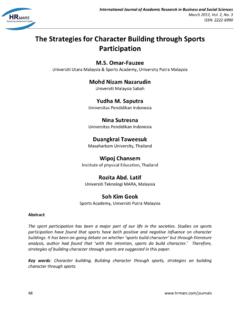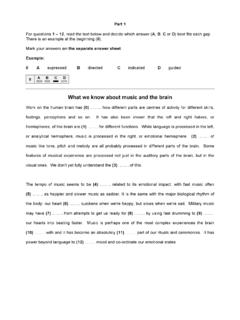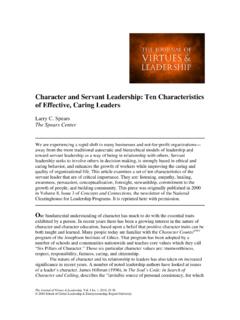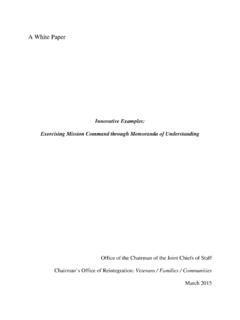Transcription of BOOKLET NO. 1 THE LODGE SYSTEM OF MASONIC EDUCATION
1 BOOKLET NO. 1 THE LODGE SYSTEM OF MASONIC EDUCATION Prepared by the Grand LODGE of Florida through the Committee on MASONIC EDUCATION for the use of the Subordinate Lodges and their members per Regulation REVISED 2009 GL-201 FOREWORD This is the first of four booklets to be used by the LODGE Committee for candidate instruction in The LODGE SYSTEM of MASONIC EDUCATION . The Educational Committee of the Grand LODGE of Florida has crystallized its findings in a method that is without doubt the best that has yet been devised. This is The LODGE SYSTEM of MASONIC EDUCATION . It is simple, it is practicable, it is employed under the immediate authority and direction of the LODGE , it works at the point where EDUCATION is most needed and best appreciated, namely, with the candidate himself, and the results, if the method is used consistently, automatically guarantee themselves.
2 We recommend it unreservedly to every LODGE . 1 A SHORT HISTORY OF FREEMASONRY My Friend: In the book of human history, Freemasonry has a chapter of its own. When you become a member of a LODGE , it is a chapter you will wish to read, as much for its own fascination as for the light it will throw upon your path as a Mason. I shall tell you a very little bit about that story; not for the sake of history as such, but to enable you to understand better the three steps of Initiation which lie before you. Men in all ages and in all lands have had secret societies; have made use of ceremonies of Initiation, employed symbols, emblems and means of recognition.
3 When Freemasonry came into existence no one knows how many centuries ago it inherited much from such societies, certain of their rites and a number of their symbols. Along your path of Initiation, you will encounter them; their unspeakable antiquity makes them more virtuous in our eyes. Among the oldest of existing written records of our Craft is a manuscript called the Regius Manuscript, written by some unknown author in England, about 1390. That was more than six centuries ago! However, the document itself shows that even then Freemasonry was already very old. At the time this document was written all Freemasons were Operatives; that is, they were workers engaged on buildings.
4 Such a builder was then called a "Mason." There were many kinds of Masons, but the evidence indicates that those who were called "Freemasons" were those builders of a superior type who designed, supervised and erected the great cathedrals and other marvelous structures in the Gothic style of architecture. Those Operative Freemasons, as previously mention, designed such buildings as a whole and in detail; dressed the stone from the quarries; laid it in the walls; set up arches, pillars, columns and buttresses; laid the floor and built the roof; carved out the decorations, made and fitted the stained glass windows into place and produced the sculptures.
5 Their work was difficult to execute; called for a high degree of skill and genius; and required of them a great deal of knowledge of mechanics and geometry as well as of Stone Masonry. They were the great artists of the Middle Ages. Training men for such work called for a long period of severe discipline. Boys sound in body, keen in mind, and of good reputation were taken at the age of ten or twelve and apprenticed to some Master Mason for a number of years, usually seven. This Master Mason was such as a boy's father in Freemasonry, his tutor, his mentor, his guide, who taught him both the theories and the practices of the Craft.
6 At the end of his apprenticeship, the youth was required to submit to exacting tests of his proficiency before being accepted into full membership in the Craft. Where a number of Freemasons worked together on a building over a period of years they organized a LODGE , which might meet in a temporary building or in one of the rooms of the uncompleted structure. Such a LODGE was governed by a Worshipful Master assisted by Wardens; it had a Secretary to keep its books, a Treasurer to keep and to disburse its funds, a charity chest from which to dispense relief to the members in accident, sickness or distress and to widows and orphans of Master Masons.
7 They met in regular Communication, divided its 2 members into grades, admitted its members by Initiation - in short, it was in all essentials what a MASONIC LODGE is today. The young beginner in learning the builders' art was called an Apprentice; after he had served as such, a sufficient time to give evidence of his fitness his name was entered in the LODGE 's books, after which he was called an Entered Apprentice. At the end of his seven or so years of apprenticeship he was called into open LODGE , his conduct was reported, and he was then set to prove his skill by producing what was called a "Master's piece." Hitherto he had been on probation; if now he passed his test satisfactorily he was made a full member of the Craft.
8 In the sense that he now stood on an equality of duty, rights and privileges with all others he was called Fellow of the Craft -- the word "fellow" meaning full membership; in the sense that he had now mastered the theories, rules, secrets, and tools of his trade he was called a Master Mason. Completing their work in one community these Freemasons would move to another, setting up their Lodges wherever they met. Other types of Masons were compelled by law to live and work in the same community year in and year out, and under local restrictions. A number of our historians believe it may have been because they were free of such restriction that the Gothic builders were called "Freemasons.
9 " Such was the Fraternity in its Operative period; and as such it flourished for generations. Then came a great change in its fortunes. Euclid's geometry was rediscovered and published, thereby giving to the public many of the Mason's old trade secrets. The Reformation came and with it the Gothic style of architecture began to die out. Social conditions underwent a revolution, laws were changed; all these and other factors which are to lengthy to describe, brought about a decline in the Craft. During the Sixteenth and Seventeenth Centuries, Freemasons became so few in number that only a small LODGE here and there clung to a precarious existence.
10 Owing to these conditions, the Freemasons, to recruit their numbers, adopted a new practice; they began to accept non-Operative members. In the old days, only an Operative Mason in the literal sense could become a member; but during the two centuries just mentioned - our historians called them the "Transition Period" - gentlemen with no intention to become builders, and out of curiosity, for social reasons, or from interest in the Craft's ancient customs, were received. And because they were thus accepted, they were called "Accepted Masons." At first, there were few of these, but as time passed their number increased, until by the early part of the Eighteenth Century they outnumbered the Operatives in both number and influence.





